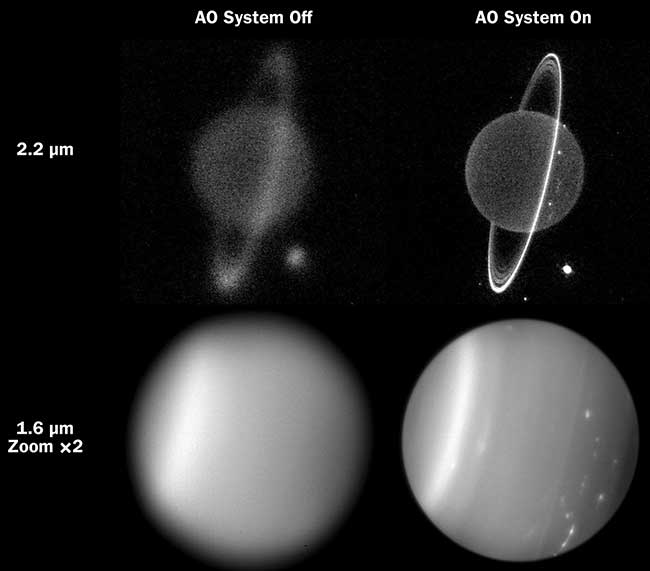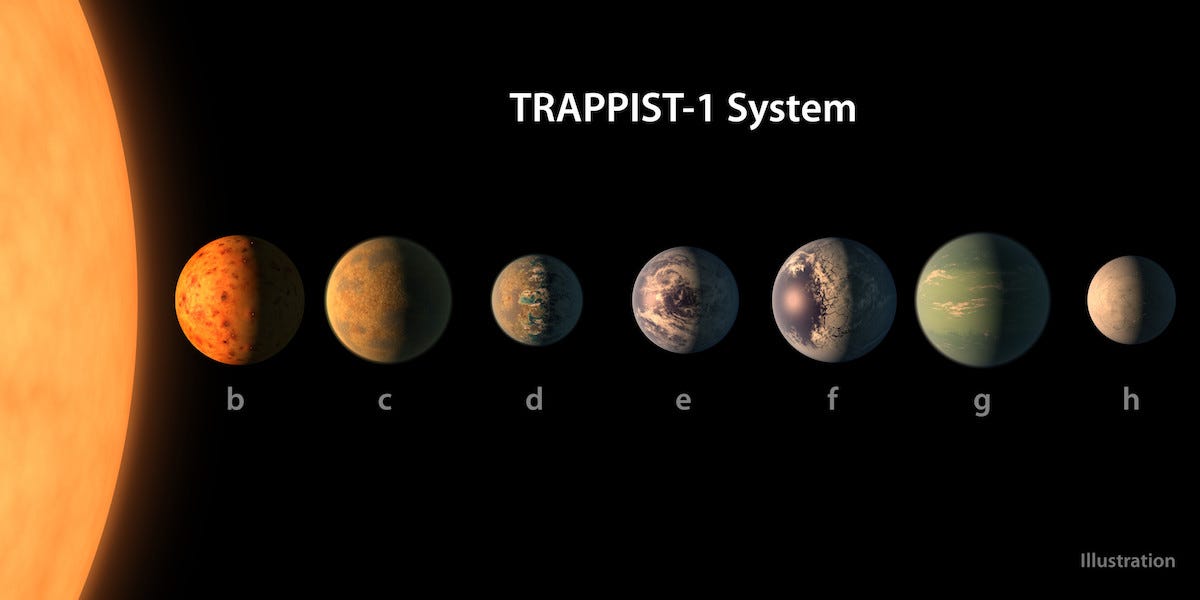
Although it has been over 20 years since NASA’s Galileo spacecraft explored the Jupiter system, new research analyzing the archived data has revealed strong evidence that Jupiter’s icy moon, Europa, is venting water into space. This makes the watery Europa, already a tantalizing place to search for alien life, all the more promising. While exploring other worlds remains challenging, the plumes open up the possibility of sending a spacecraft to collect a sample without ever having to land on Europa’s surface. Cynthia Philips of NASA’s Jet Propulsion Laboratory, and a former Senior Research Scientist for the SETI Institute, told National Geographic that the plumes are probably don’t come from a vast ocean, but a smaller body of water:
“It’s unlikely that one of these plumes is going to throw a fish into space that’s going to whack into Europa Clipper,” says Cynthia Phillips of NASA’s Jet Propulsion Laboratory. “It’s more likely to come from pockets of liquid that are closer to the surface – so, not free ocean samples, but free subsurface samples.”
The Hubble Space Telescope caught imagery of what appeared to be plumes of water vapor erupting from Europa’s surface in 2013, but follow-up observations were unable to provide confirmation. Research into the Galileo spacecraft data, which was led by Xianzhe Jia of the University of Michigan in Ann Arbor, has provided strong corroborations for the occurrence of plumes. EarthSky notes that Melissa McGrath, Senior Scientist at the SETI Institute and co-investigator on NASA’s Europa Clipper mission, helped stir interest in the archived data:
Jia’s team was inspired to dive back into the Galileo data by Melissa McGrath of the SETI Institute in Mountain View, California. A member of the Europa Clipper science team, McGrath delivered a presentation to fellow team scientists, highlighting other Hubble observations of Europa.
“One of the locations she mentioned rang a bell. Galileo actually did a flyby of that location, and it was the closest one we ever had. We realized we had to go back,” Jia said. “We needed to see whether there was anything in the data that could tell us whether or not there was a plume.”
While we still don’t know how often the plumes occur, the data strongly indicates that they happen at least occasionally. As McGrath told National Geographic, although the Clipper spacecraft is already being designed to include instruments for collecting samples from the plumes, we can’t guess what will be found:
“Even with our wildest imagination, we always see stuff that we totally did not expect,” McGrath says. “We’ll surely see something we totally don’t expect at Europa.”
- National Geographic: Water Geysers Likely Found on This 'Alien' Ice Moon
- EarthSky: Are there geysers on Europa?
- Astronomy: Old Data Reveal New Evidence of Europa Plumes
- SETI.org: Remastered image of Europa released by NASA
 Planet, or Dust Mote? New Analysis Casts Doubt on Exoplanet’s Existence
Planet, or Dust Mote? New Analysis Casts Doubt on Exoplanet’s ExistenceThe Kepler Space Telescope has provided incredible data and allowed researchers to identify thousands of exoplanets – but it seems one in particular, Kepler-452b, might be a false alarm. Announced by NASA in 2015, Kepler-452b was an exciting find because it was the first near-Earth-sized planet orbiting the “habitable zone” of a star similar to the Sun. Since then, new analysis of the data and of the telescope’s limitations have called Kepler-452b’s existence into question. NPR spoke to Fergal Mullally, former SETI Institute scientist, about the telescope’s imperfections:
"I kind of hate saying that because Kepler was an absolutely wonderful instrument," he says. "It was exquisite in the quality of the data it could detect. But nothing is perfect."
However, researchers, including SETI Institute scientist Jeffrey Coughlin, aren’t prepared to say that the planet isn’t there either:
"We're not disproving it's there. We're not saying it's not a planet," says Jeff Coughlin of the SETI Institute. "We're just saying, with a better understanding, we can't 100 percent say it's a planet anymore."
A growing number of planets have been reliably confirmed, and Kepler-452b might yet be verified with data from other sources, such as the Hubble Space Telescope.
- NPR: Earth's 'Bigger, Older Cousin' Maybe Doesn't Even Exist
- Sputnik News: Don’t Pack Your Bag Yet: Many Exoplanets Found By Kepler May Not Be Real
 AI May Revolutionize Future SETI Research
AI May Revolutionize Future SETI ResearchEarlier this past year, astrobiologist Nathalie Cabrol, Director of the Carl Sagan Center at the SETI Institute, held a workshop titled “Decoding Alien Intelligence”. The workshop was organized around Cabrol’s 2016 paper, “Alien Mindscapes” which challenged SETI to pursue “the search for life as we do not know it.”
The Conversation and Scientific American, among others, covered the story in light of the recent proposed legislation in the US Congress that may allow for government funds to once again be directed towards the search for extraterrestrial intelligence. A challenge that the workshop confronted is the tendency to hold assumptions or expectations about what we might find. As Outer Places notes, Cabrol’s paper suggests we could be missing something:
The paper points out that the "search for extraterrestrial intelligence" usually ends up being a "[search] for other versions of ourselves."
One way of cutting through this kind of human-centric bias is through the use of AI. The SETI Institute, in partnership with NASA, Intel, IBM and others, have organized an accelerated research and development program called the Frontier Development Lab, with the aim of applying AI technologies to the challenges of space exploration. While there is incredible promise in the use of AI in the realm of planetary defense, such as asteroid detection and solar storm modeling, the Conversation notes there may be rich potential in its applications for understanding alien communications.
Graham Mackintosh, an AI consultant at the SETI Institute workshop, said "extraterrestrials might be doing things we can’t even imagine, using technologies so different we don’t even think to look for them." AI, he proposed,"might be able to do that advanced thinking for us. We may not be able to make ourselves smarter, but perhaps, Mackintosh suggested, we can make machines that are smarter for us.
Whatever the future holds, the SETI Institute continues to pursue collaborations that foster an interdisciplinary approach to answering the compelling question: are we alone?
You can hear a conversation among several of the participants of the “Decoding Alien Intelligence” conference – which included astronomers, anthropologists, and AI researchers – and other interviews on our Facebook page.
- The Conversation: Can Artificial Intelligence Help Find Alien Intelligence
- Outer Places: Congress Just Proposed Legislation to Search for Alien Life – How AI Can Overcome the Biggest Obstacle of Our Own Human Bias
- International Business Times: Artificial intelligence in search of alien intelligence, SETI sets right foot forward
- Value Walk: The Search For Alien Intelligence May Be Revolutionized By New AI Tech
- Astrobiology: Alien Mindscapes—A Perspective on the Search for Extraterrestrial Intelligence
- Facebook: Decoding Alien Intelligence
- SETI.org: NASA FDL Developing New Approaches to Asteroid, Comet and Solar Threats Using AI
 Listening in a Noisy Universe
Listening in a Noisy UniverseAndrew Siemion, Bernard M. Oliver Chair of SETI Research at the SETI Institute, appeared in a video produce by Seeker exploring the work, and challenges, of technosignature detection. Watch to learn how SETI research has developed with new technologies, such as AI, rapidly changing the field, even as the proliferation of everyday technology add to the noise researchers must compensate for.
- Seeker: If We Heard from Aliens, What Would It Look Like?
- SETI.org: Andrew Siemion Named Bernard M. Oliver Chair of SETI at the SETI Institute
 Adaptive Optics – the Technology of Discovery
Adaptive Optics – the Technology of DiscoveryAdaptive optics are technology used to compensate for aberrations, such as atmospheric distortions. Astronomer has driven the development of this technology, as optical telescopes often depend on them in order to capture clear images over incredible distances. Franck Marchis, Senior Scientist at the SETI Institute, spoke to Photonics about the importance of this technology to exoplanet research:
“Privately funded projects, like TIKI (mid-infrared), Project Blue (visible in space), and ELF (visible on the ground), which used AO coupled with coronagraphy, is probably the hot goal of our decade,” Marchis said. “If we discover signs of life on an exoplanet around the Alpha Centauri stars, that will be because of adaptive optics.”
- Photonics Media: Adaptive Optics Look Farther Than Ever Before
 “Eavesdropping” on ET
“Eavesdropping” on ETMedium reports that a hypothesis that we might be able to “eavesdrop” on advanced alien civilizations communicating between planets may get an assist from IBM. Using the Allen Telescope Array to detect radio transmissions, the IBM Data Science Experience would allow signal analysis to determine if the signals are a form of communication. TRAPPIST-1 is a target of this research since it may be habitable. Jon Richards and Gerald Harp of the SETI Institute worked with Graham Mackintosh and others to explore the possibilities.
Medium: TRAPPIST-1 Interplanetary Eavesdropping on IBM Cloud
 SETI Research May Receive Funding from Congress for the First Time in 25 Years
SETI Research May Receive Funding from Congress for the First Time in 25 YearsRecently the Atlantic covered an authorization bill proposed in the US House of Representatives that, if it passes, could make government funds available for SETI research for the first time in 25 years. The media has been following this noteworthy shift in the attitude towards SETI research with keen interest, as Live Science reports:
"If it passes, it would definitely be a sea-change in Congressional attitude since Sen. [Richard] Bryan terminated NASA's SETI program, the High Resolution Microwave Survey, in 1993," renowned astronomer Jill Tarter, former director of the SETI Institute, told Live Science in an email.
Prior to 1993, SETI research had involved collaboration with NASA towards the first large scale projects with the aim of systematic signal detection. The pursuit of answers to humankind’s profound questions about the nature of life in the universe, though hindered when Congress terminated funding, remained the central mission of the SETI Institute. The SETI Institute, co-founded by Chair Emeritus for SETI Research, Jill Tarter, has since endeavored to continue those programs with private funding. While it is not yet clear what will come of the bill – it isn’t an appropriations bill, and even if passed may not provide SETI funding – it’s nonetheless “a very big deal”, according to Tarter. Still, Tarter has commented that more is needed for a successful long-term SETI undertaking. Live Science reports that Tarter has hopes for “an international endowment” to make funding available for the long-term:
"By smoothing out the funding roller coaster that has characterized this research field from the beginning, it will be possible to attract the best and brightest minds with the best ideas from everywhere, and commit to the long-term search efforts that might be required for success."
Are alien greetings just around the corner? Tarter said we have the technology now to search for more distant and fainter signals in ways we haven't tried before. "But that doesn't guarantee success in the 'near future.' The cosmos is vast, and we may not yet be looking in the right way, although we are doing the best job possible with what we now know."
You can read more about the SETI Institute’s history and current projects on our ‘About Us’ page.
- LiveScience: Congress Wants to Spend $10 Million to Search for Aliens, and Texas Is to Thank
- Fast Company: Is SETI getting NASA funding? Don’t get too excited yet
- Tech Times: Proposed NASA Budget Allots $10 Million To Find Technosignatures From Aliens
- Inquisitr: Congress Is Proposing A New Bill That Would Give $10 Million To The Search For Extraterrestrial Life
- Washington Examiner: Bill pushes NASA to hunt for alien life
- Newsweek: Search for Aliens: Is Congress About to Start Funding New Nasa Research?
- Daily Express: UFO hunt: US Congress proposes $10million fund to find aliens with Artificial Intelligence
- Outer Places: NASA Arms Scientists With $24M In Grants To Study Life In Universe While Congress Urges Alien Search Funding
- The Space Reporter: Congress proposes funding search for intelligent alien civilizations
- SETI.org: A History of SETI
 Girl Scouts “Reaching for the Stars” at High Rock Tower
Girl Scouts “Reaching for the Stars” at High Rock TowerHigh Rock Tower and Observatory in Massachusetts hosted a Star Party on May 18th for Girl Scouts in grades K-5, the Science Examiner reports. The event was created in partnership between the Girl Scouts of the USA, the SETI Institute, and NASA, and is part of a broader effort to engage girls in STEM learning and careers. This project, “Reaching for the Stars: NASA Science for Girl Scouts”, also helped to provide “Eclipse Boxes” featuring activities for girls to participate in surrounding 2017’s Great American Eclipse.
You can learn more about the SETI Institute’s “Reaching for the Stars” program on our website, SETI.org.
- Science Examiner: Girl Scouts who have an enthusiasm for STEM, Opportunity waiting for you in High Rock Tower Observatory
- SETI.org: Reaching for the Stars: NASA Science for Girl Scouts
 Frank Drake to be Keynote Speaker at Upcoming International Space Development Conference
Frank Drake to be Keynote Speaker at Upcoming International Space Development ConferenceA press release recently announced the upcoming International Space Development Conference will feature several speakers from the science fiction community, as well as an array of renowned scientists, engineers, and space entrepreneurs. Among the honored speakers will be Frank Drake, Chair Emeritus of the SETI Institute Board of Trustees. Drake will present a keynote address titled, "SETI - Where Do We Go From Here?" at the 2018 ISDC, which will take place in Los Angeles on May 24-27.
- EIN Presswire: Stars of Science Fiction Are Coming to ISDC 2018!
- National Space Society: ISDC 2018 Speakers
 Big Picture Science
Big Picture ScienceLast week’s episode sought the virtuous in virtual reality with We Are VR. This week, discover the microorganisms that call YOU home, in You Are Exposed.
Last week’s Facebook Live featured the SETI Institute’s senior astronomer and host of the Big Picture Science radio show and podcast, along with Executive Producer and co-host Molly Bentley. Listen in as Seth and Molly discuss the show and the big questions they take on every week. This week, SETI Institute senior research scientist Franck Marchis introduced us to Dr. Alan Stern, principle investigator of the New Horizons mission to Pluto, and astrobiologist Dr. David Grinspoon. Watch an engaging conversation on the New Horizons mission and their new book, Chasing New Horizons.
Videos of all past Facebook Live events can be found on our Facebook page: https://www.facebook.com/SETIInstitute/
- SHIFT Business Festival: May 22-23 Turku, Finland Andrew Siemion will deliver a keynote address and participate in a round table conversation
- Space Tech Expo: May 22-24, Pasadena, CA Bill Diamond will participate
- SETI Talks: May 23, Menlo Park, CA Hal’s Legacy: 2001s Computer as Dream and Reality with David Stork
- Yerkes Observatory Starlight Festival: May 26, Williams Bay, WI Seth Shostak to speak
- SkeptiCal Con: June 10, Berkeley, CA Seth Shostak to speak
- The Drake Award: June 14, Menlo Park, CA Victoria S. Meadows will be presented with the SETI Institute’s Drake Award and speak about her work.
- Alien Con 2018: June 15-17, Pasadena, CA Seth Shostak to speak
- Astrobiology Australasia Conference 2018: June 25-26, Rotorua, New Zealand Seth Shostak to speak
- Spacefest IX: July 5-8, Tucson, AZ Seth Shostak will be a featured speaker
- COSPAR 2018: July 14-22, Pasadena, CA Seth Shostak to present “Red Dwarf Star Survey with the ATA”





